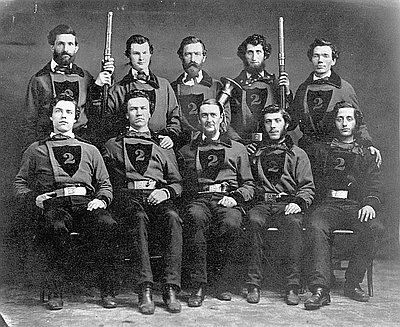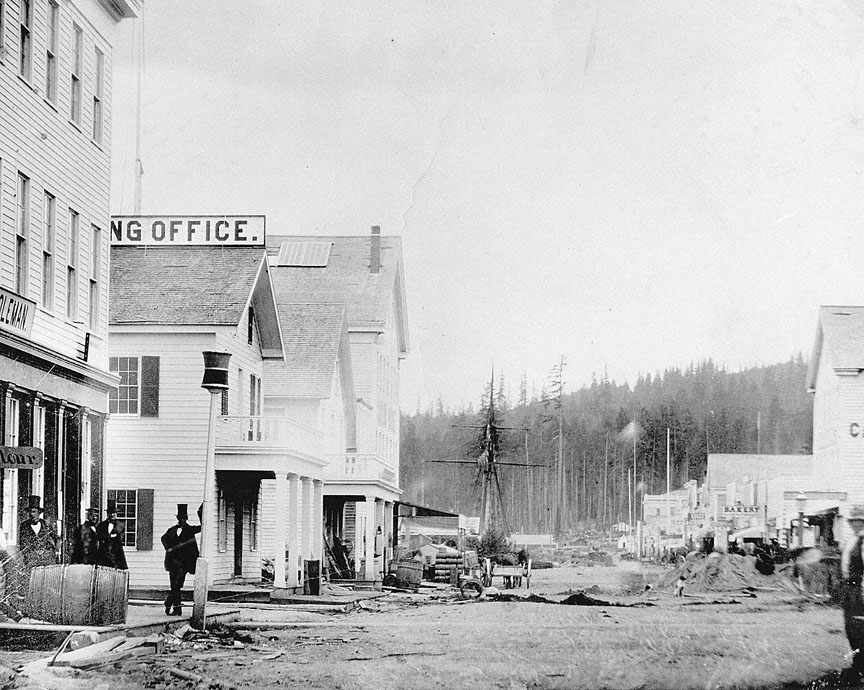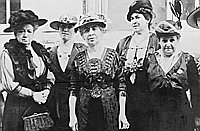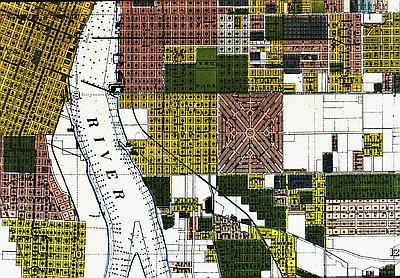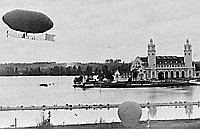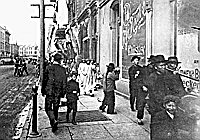Early Portland
Portland became a city on January 14, 1851, when the territorial legislature granted it a charter. At that time, the city measured out at 2.1 square miles, an area that included Douglas-firs, stumps, and structures. The city council consisted of the mayor, a recorder, and five councilmen, all elected for one-year terms. By 1862, the mayor’s term had been extended to two years. While mayors, who were primarily from the merchant elite, saw themselves primarily as promoters for their city’s growth, the majority of the city council usually consisted of skilled workers, with a few professionals. In order to vote in city elections, white male residents had to have lived in Portland three months prior to the election; women and nonwhite men could not vote.
The city council enacted laws to preserve the health, safety, and morals of the citizens. It issued licenses, levied taxes on real and personal property, and appointed a marshal to collect taxes and a treasurer to hold and record them. As a corporate body, it bought and sold property and access to the courts. The area’s population grew fast enough so that Multnomah County, with Portland as the county seat, was carved out of Washington County in January 1854, a year after Congress had declared Salem the territorial capital. In 1870, a larger and sparsely settled tract directly across the Willamette River from the city was incorporated as East Portland.
While the West Hills were wooded, only Lownsdale and Chapman Squares were originally designated as open space within the city. In addition, Daniel Lownsdale preserved for public use eleven contiguous north and south blocks between Eight and Ninth Streets, and John Couch continued the public space for five additional blocks in his addition to the north. The Park Blocks, as they were called, were purchased by the city in 1871 during the administration of Mayor Bernard Goldsmith. Ben Stark, whose property lay between the two sections, did not dedicate such space, and those eight blocks continue to be occupied by hotels, stores, and offices. The city’s first official park, which became the nucleus of Washington Park, was purchased for $32,000 in 1871 from Mr. and Mrs. Amos King. By 1890, the city had annexed the additions of Caruthers, Couch, Goldsmith, and others to enlarge the city to 6.1 square miles.
In the 1850s, Portland acquired the rudiments of urban life, as entrepreneurs started a water works and gas works and operated several ferries on the Willamette. On December 4, 1850, Henry Corbett and W.W. Chapman started a weekly newspaper—the Oregonian—and hired Thomas J. Dryer as editor. In 1860, the paper was acquired by its printer, Henry Pittock, who transformed into a daily. As Pittock shifted his interests to banking and real estate speculation, editor Harvey Scott made it a conservative Republican paper. National journalists soon considered him the most influential editor on the West Coast.
Because city revenues depended heavily on fees from licenses, government services were slow to develop. By 1853, merchants had organized a volunteer fire company to protect their stores, and three years later four cisterns were in place along First Street to protect the business district and wharves. The mains for a sewer system were paid for by assessing property owners. By 1865, the city began paving selected streets, experimenting with a variety of wood and stone surfaces. Then, in 1868 the U.S. Army Corps of Engineers began a three-year project to dredge a seventeen-foot channel to the sea in the Willamette and Columbia Rivers. The Corps, in partnership with the Port of Portland, has maintained and deepened the city’s vital commercial link ever since.
A salaried police force, with one marshal and two deputies, was formed in 1867, with liquor license fees covering the expense. The funding source was considered appropriate because most arrests were for public drunkenness and other forms of disorderly conduct. By 1880, as the city’s population reached 17,500, the force had grown to twelve patrolmen, one chief, two captains, one detective, and a clerk. They occupied the city’s lone public building, which also included a courtroom and a jail. The city rented a building to house its auditor, clerk, surveyor, assessor, and superintendent of streets. Since the city attorney, city treasurer, and mayor also carried on private businesses, they had no public offices.
In the 1860s, the Sisters of the Holy Names founded a boarding school and academy in Portland, and the Sisters of Providence moved their hospital from Vancouver to Portland in 1875, when the St. Vincent DePaul Society donated land bounded by Marshall, Northrup, Eleventh Street, and Twelfth Street. Along with Good Samaritan, opened in 1875 by the Episcopal Church, St. Vincent’s was one of Portland’s two major hospitals. The Sisters read medical books, attended lectures by local doctors, prepared their own medications, and organized a school for nurses in 1892. As the city’s population expanded, they raised money to acquire a larger tract near Westover Road and by 1895 had moved to a larger facility.
Married women with children usually used church-affiliated societies to take responsibility for the welfare of families and for women in distress. By 1877, women of the First Presbyterian Church had founded The Home, where destitute women and children could find temporary shelter. For decades, leadership was provided by two widows, Mrs. Amory Holbrook and Mrs. Bancroft, assisted by the wives of Capt. John C. Ainsworth and Theodore Wygant, officers of the Oregon Railroad and Navigation Company.
By 1900, the Children’s Home had been relocated to southwest Corbett Street, and its officers were still the wives of prominent merchants. The Episcopal Church had a Parish Guild to assist the poor, headed by the wife of Major Hampton, a railroad speculator, and Mrs. John McCracken, the wife of a wealthy merchant. The First Ladies Hebrew Benevolent Society, also headed by wives of merchants, provided death and burial benefits for members and relief for Jewish women facing emergencies.
By the time they were forty years old, most middle-class white women would have raised from four to six children while supervising young servant girls and perhaps a male Chinese servant. In 1880, of a group of 103 wives between the ages of thirty and forty-nine in elite Protestant families, 54 percent had at least four children living with them. Many households also included elderly relatives, and Jewish households often had immigrant relatives who served as clerks in family businesses.
Social horizons expanded, as wealthy families built their houses close to poor neighborhoods. While three or four wealthy families usually lived next to one another on the western and southern edges of the business district, in the 1880s they still lived around the corner from skilled working-class families. Members of the Failing, Ladd,b Corbett, Pittock, Meier, Goldsmith, and Hirsch families needed only walk around the block to be on a street where harness makers, carpenters, and brick masons lived.
With meager public funding and limited technology, cities in the nineteenth century were susceptible to fires, floods, and epidemics. Fire destroyed sections of Portland’s business district in December 1872 and August 1873, after which the city required that all new structures in the city’s business core be built of brick. As early as 1865, the city had four volunteer engine companies, with about fifty members each. In 1880, a new engine house was built on Front Street, south of the central business district; another opened on Northwest Nineteenth and Q Streets, near mills and machine shops. In 1882, the city began to pay fulltime firemen, who used horses to draw firefighting wagons. When fires seemed beyond the control of local firemen, telegraphic dispatches summoned help from Salem and Eugene, which sent engines and crews on river steamers and, later, trains.
The Willamette Valley was periodically flooded by late spring thaws in the Cascades. Portland’s business district was overrun in 1853, 1854, 1862, 1871, and, most severely, in 1876 and 1894. On June 24, 1876, the water flooded stores along Second Street, reaching a highwater mark of twenty-five feet. In June 1894, the waters reached Northwest Tenth and Glisan Streets and Southwest Sixth and Washington Streets, a highwater mark of over thirty-three feet.
The Union Pacific’s new car shops in Albina were flooded, and trains could not enter the city. The Portland Gas Company had its generators flooded and its mains washed out. Boats floated through the downtown like gondolas in Venice, conveying produce and people to the second story of three- and four-story masonry buildings. Unlike fires, which city officials tried to prevent with building codes and to fight with a professional force, floods seemed inevitable. To help control them, the city eventually built higher walls along the waterfront, and the Corps of Engineers constructed dams on the upper Willamette.
© William Toll, 2003. Updated and revised by OHP staff, 2014.
Sections
Related Historical Records
Julius Meier (1874-1937)
The son of Aaron Meier, a founder of the Meier & Frank department store chain, Julius Meier was born in 1874. After graduating from the University of Oregon …
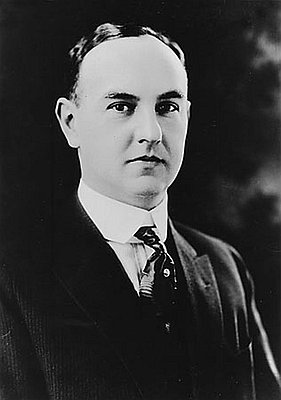
Harvey Scott near Seaside, 1905
This 1905 photograph shows Harvey Scott reading the day’s Oregonian on the Oregon Coast near Seaside. Scott was born on a farm near Groveland, Illinois. His sister was Oregon’s famous …
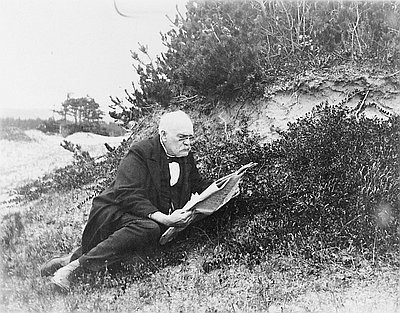
Volunteer Firefighters, 1858
In this photo, Stephen Skidmore, age 19, is shown sitting on the left in the front row with other members of Multnomah No. 2 Volunteer Fire Company. Skidmore …
